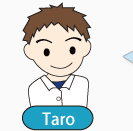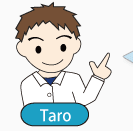Surface Acoustic Wave

Surface acoustic wave technology makes use of ultrasonic waves for detection. It is often abbreviated to SAW.

OK, I wonder how sounds are used to detect touched locations.

Let's look at the structure of the touch screen first.
Structure


Take a look at the figure. Surface acoustic wave touch screen consists of one glass sheet with transmitting transducers, receiving transducers, and reflectors. Transmitting transducers generate ultrasonic waves that travel over the panel surface. The ultrasonic waves are reflected by the reflectors and received by the receiving transducers.

OK, then I guess the ultrasonic waves traveling over the panel surface are surface acoustic waves?

Exactly, I will explain how it detects touched points in the sensing method section.
Sensing Method

If contacted by a soft material, SAW will get absorbed by it. Surface acoustic wave technology makes use of this nature of SAW.
SAWs are sent out from the transmitting transducers, and traveling along the edge of panel. The reflectors located on the edge of the panel change directions of the SAWs at the angle of 90 degrees, thus the SAWs travel over the panel. Once the SAWs reached the other side of the panel, their directions get changed again by the reflectors located on the other side, and travel toward the receiving transducers. Once the SAWs are received by the receiving transducers, they will be converted into electric signals.

I see. If it is touched by a finger, the SAWs will be absorbed by it and do not reach to the receiving transducer. Then, the sensor detects where the SAWs were absorbed?

Good guess! As shown in the figure, there are routes on which the SAWs travel from the transmitting transducers to the receiving transducers. Each route has its own distance. If one of the routes is touched by a finger, the pulse will be absorbed, and the SAW on the route will not be received by the receiving transducers. Thus, the sensor will recognize which route was touched, and locate the touched point.

I see. So, it can detect touches by any material soft enough to absorb SAWs.

Exactly. Let's see the features of SAW technology.
Features
- SAW touch screen is good at light transmission because it consists of one glass layer. Visibility is excellent.
- SAW touch screen is notable for its durability. It has long life, and its glass surface is strong against scratch. Even though the panel surface gets scratched, its sensing function will not be affected.
- It is relatively easy to build a large size touch screen in SAW technology.
- SAW touch screen does not get affected by external electric noise.
- Accuracy of detecting touched points does not get affected by environment nor passage of time. Thus, it is free of maintenance.
- Resolution is relatively high.
- The frame areas need to be wide because transducers are located.
- Detecting function of SAW technology can be affected by water droplet, oil and so on. Malfunction can be caused by those factors.
- SAW touch screen does not detect a touch by hard materials which do not absorb pulse.
- SAW is usually employed for large size applications such as kiosk, arcade game, automated cash dispenser, medical equipment, office automation, factory automation, financial field, and so on.
